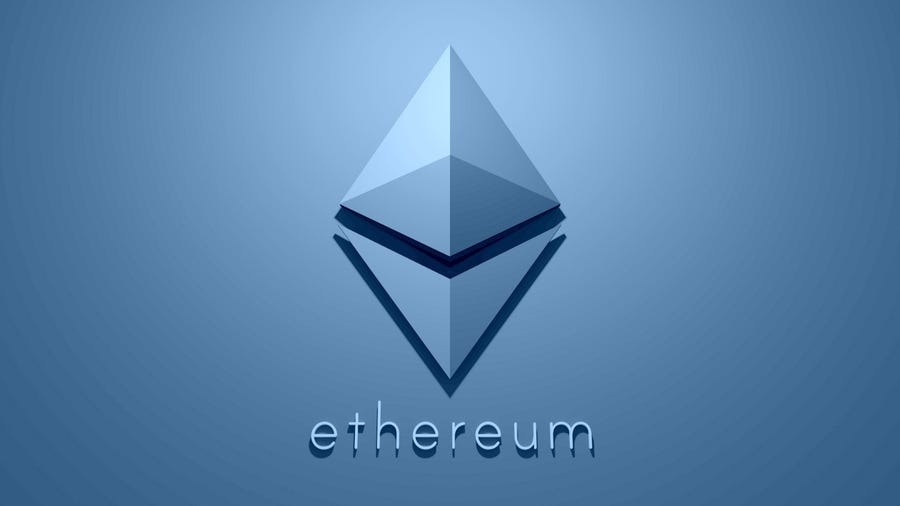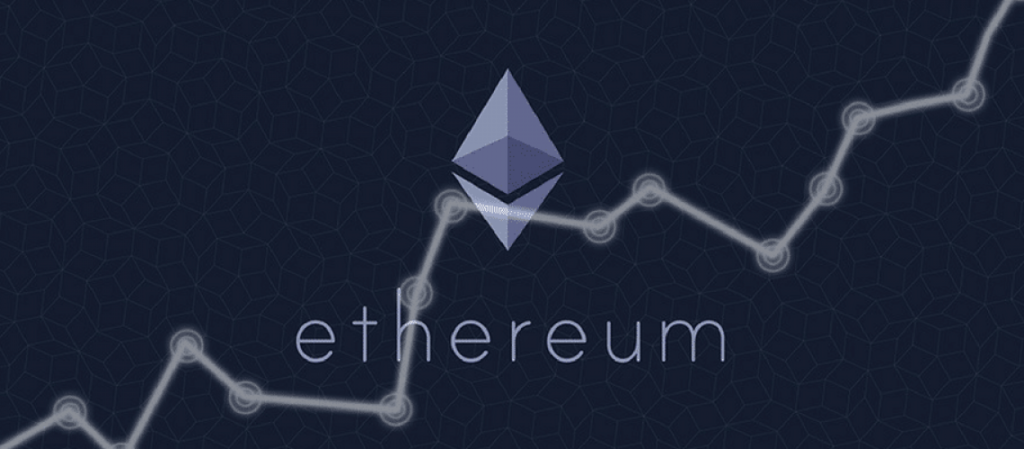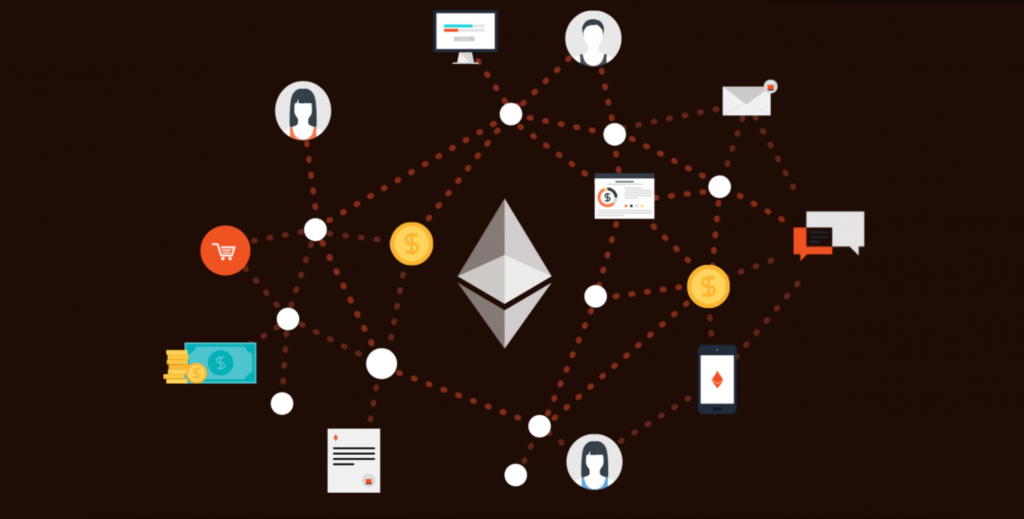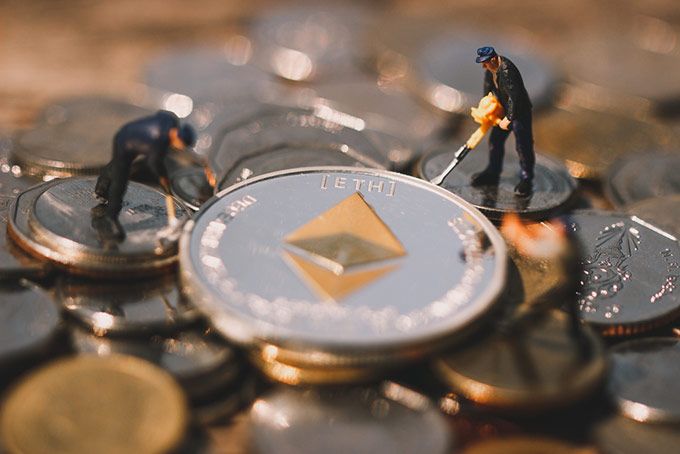Ethereum Guide For Beginners: Ethereum is a favorite of program developers because of its potential applications, like so-called smart contracts that automatically execute when conditions are met and non-fungible tokens (NFTs).

Ethereum
Ethereum Guide For Beginners: If Bitcoin (BTC) is the alleged future of money, then what is Ethereum? For someone new to the cryptocurrency space, that’s the logical question to ask, considering they probably see Ethereum and its native Ether (ETH) cryptocurrency next to Bitcoin everywhere on exchanges and in the news.
Ethereum Guide For Beginners
Ethereum Guide For Beginners: However, it’s not exactly fair to consider Ethereum to be in direct competition with Bitcoin. It has different goals, features, and even technology. Ethereum is a decentralized blockchain network powered by the Ether token that enables users to make transactions, earn interest on their holdings through staking, use, and store nonfungible tokens (NFTs), trade cryptocurrencies, play games, use social media and so much more.
History of Ethereum
Ethereum wasn’t always the second-largest blockchain project in the world. Vitalik Buterin actually co-created the project to answer for Bitcoin’s shortcomings. Buterin published the Ethereum white paper in 2013, detailing smart contracts — automated immutable “if-then” statements — enabling the development of decentralized applications. While DApp development already existed in the blockchain space, platforms weren’t interoperable. Buterin intended Ethereum to unify them. To him, unifying the way DApps run and interact was the only way to maintain adoption.

Thus, Ethereum 1.0 was born. Think of it as Apple’s App Store: one space for tens of thousands of different applications, all abiding by the same ruleset. Only that ruleset is hardcoded into the network and enforced autonomously with developers able to enforce their own rules within DApps. There isn’t a central party, like Apple changing and enforcing regulations. Instead, the power is in the hands of the people who act as a community.
The group also founded the Ethereum Foundation in Switzerland with the mission to maintain and develop the network. Soon after, Buterin announced that the foundation would run as a nonprofit, which caused some co-founders to leave.
Ethereum work
Like Bitcoin, the Ethereum network exists on thousands of computers worldwide, thanks to users participating as “nodes,” rather than a centralized server. This makes the network decentralized and highly immune to attacks, and essentially unable to go down as a result. If one computer goes down, it doesn’t matter because thousands of others are holding the network up.
Ethereum is essentially a single decentralized system that runs a computer called the Ethereum Virtual Machine (EVM). Each node holds a copy of that computer, meaning that any interactions must be verified so everyone can update their copy.
Network interactions are otherwise considered “transactions” and are stored within blocks on the Ethereum blockchain. Miners validate these blocks before committing them to the network and acting as transaction history or a digital ledger. Mining to verify transactions is known as a proof-of-work (PoW) consensus method. Each block has a unique 64-digit code identifying it. Miners commit their computer power to find that code, proving that it’s unique. Their computer power is “proof” of that work, and miners are rewarded in ETH for their efforts.
Also, like Bitcoin, all Ethereum transactions are entirely public. Miners broadcast completed blocks to the rest of the network, confirming the change and adding the blocks to everyone’s copy of the ledger. Confirmed blocks cannot be tampered with, serving as a perfect history of all network transactions.

Ethereum do
Decentralized finance has arguably been the Ethereum network’s biggest achievement. DApps that can perform several functions within the ecosystem popped up around 2019 to 2020 and are growing in popularity by the day. The more DApps are used, the more the Ethereum network will be used as a result. Ethereum’s DeFi scene is the biggest one out there, with successful DApps bringing more awareness to the platform over the years.
Artists, for example, are making millions of dollars by bringing their work to the blockchain via nonfungible tokens, or NFTs. One might wonder, why buy digital art when we can just screenshot it? Collectors want ownership, that’s why. NFTs also hold proof of ownership and serve as a secure form of storage. It’s basically an all-in-one for collectors, so it’s not hard to see the appeal.
It’s the same reason that one would want the original “Mona Lisa” over just a copy, even if a copy is indistinguishable from the first. NFTs also represent usable items and accessories in online games. Players can decorate their houses and characters with unique assets from artists, providing yet another income stream for creatives.
Ethereum Mining
The process of creating a block of transactions to be added to the Ethereum blockchain is referred to as mining. Ethereum currently uses a proof-of-work blockchain but is moving to proof-of-stake (PoS) with Ethereum 2.0 for scalability purposes and a more environmentally friendly approach.
Ethereum miners are computers that run the software and use their time and processing power to process transactions and create blocks. Network participants must ensure that everyone agrees on sequencing transactions in decentralized systems like Ethereum. Miners assist in this by generating blocks by solving computationally challenging riddles, thereby safeguarding the network from attackers.

Ethereum vs. Bitcoin
While Bitcoin is the most mainstream cryptocurrency, the Ethereum community has the ambition to expand the project. The former is meant to be digital money, and it serves that purpose reasonably well. But Bitcoin has its limitations. It’s a PoW network that’s struggling to scale, leading some to believe that it’s more of a store of value, similar to gold. Bitcoin also has a hard cap of 21 million coins, lending itself more to that argument.
Ethereum, on the other hand, intends to overtake our current internet infrastructure. It plans to automate many processes that still require intermediaries such as using an app store or working with fund managers. ETH is used more as a way to interact with the network than as a way to transfer money, though it can do that too.
The Future Of Ethereum
- Scaling through the use of ZK-Rollups and other off-chain solutions. A lot of work has gone into developing technologies that will let transactions take place off-chain and then be periodically verified on-chain. A lot of these scaling solutions will start to come online in late 2020 and early 2021, which should help reduce network congestion.
- EY has already spent several million dollars to fund research looking into how to bring privacy to Ethereum. As a consulting firm, EY expects that privacy protection on Ethereum will open up the door to greater levels of institutional adoption. However, everyone can benefit from privacy and we should be looking out for some new privacy solutions in 2021.
- Staking is coming! This will allow Ethereum investors to earn a passive income just for holding and staking Ethereum. When other blockchains like Cardano and Tezos have implemented staking the price of the coin has gone up noticeably.
- Decentralized exchanges have become incredibly popular. At its peak, Uniswap famously did more volume than Coinbase Pro! This preview of what’s to come shows us that we can look forward to the day when decentralized exchanges are competing with centralized exchanges in terms of trading volume.
- Ethereum has had collateralized lending for years, thanks to MakerDAO. However, in the next few years, the next big financial product is going to be uncollateralized lending. Nobody has quite figured it out yet but once it happens it’s almost definitely going to be instantly popular.

The rise of Ethereum
Ethereum was not always the world’s second-largest blockchain project. Vitalik Buterin co-founded the project in order to address Bitcoin’s flaws. In 2013, Buterin presented the Ethereum white paper, which described smart contracts, which are automated unchangeable “if-then” statements that allow decentralized applications (DApps) to be built.
While there was previously DApp development in the blockchain arena, the platforms were not compatible. Ethereum, according to Buterin, was created to bring them together. To him, the only way to retain adoption was to unify the way DApps function and interact. As a result, Ethereum 1.0 was created.
Advantages of Ethereum
Advantages of Ethereum: Here are the advantages of ethereum enjoyed by enterprises:
Decentralization
Advantages of Ethereum: The decentralized design of Ethereum effectively distributes knowledge and trust among network members, removing the need for a central body to run the system and mediate transactions.
Rapid deployment
Advantages of Ethereum: Instead of building a blockchain implementation from scratch, organizations can quickly create and administer private blockchain networks using an all-in-one SaaS platform like Hyperledger Besu.
Permissioned network
Advantages of Ethereum: There are many open-source protocol layers that allow enterprises to build on public or private Ethereum networks, guaranteeing that their solution meets all regulatory and security standards.

Network size
Advantages of Ethereum: The Ethereum mainnet demonstrates that a network with hundreds of nodes and millions of users can function. Most business blockchain competitors run networks with less than ten nodes and have no precedent for a large and successful network. For corporate collaborations that are bound to outgrow a few nodes, network scale is important.
Private transactions
Advantages of Ethereum: In Ethereum, businesses may obtain privacy granularity by joining private partnerships with private transaction layers. Private information is encrypted and only shared with those who need to know.
Scalability and performance
Advantages of Ethereum: Consortium networks created on Ethereum may outperform the public mainnet and grow up to hundreds of transactions per second or more depending on network setup, thanks to Proof of Authority consensus and bespoke block time and gas limits.
Ethereum will be able to boost its throughput in the near future thanks to protocol-level solutions like sharding and off-chain, as well as layer 2 scaling solutions like Plasma and state channels.
Finality
Advantages of Ethereum: The consensus method of a blockchain ensures that the transaction record is tamper-proof and canonical. For different enterprise network instances, Ethereum offers customizable consensus mechanisms such as RAFT and IBFT, ensuring immediate transaction finality and reducing the required infrastructure that the Proof of Work algorithm requires.
Tokenization
Advantages of Ethereum: Any item that has been registered in a digital format can be tokenized on Ethereum. Organizations may fractionalize formerly monolithic assets (real estate), broaden their product line (provably rare art), and open new incentive models by tokenizing assets (crowdsourced data management).

Interoperability and open source
Advantages of Ethereum: On Ethereum, consortiums are not bound by a single vendor’s IT environment. Customers of Amazon Web Services, for example, can use Kaleido’s Blockchain Business Cloud to run private networks. The Ethereum ecosystem, like the Java community, encourages contributions to the codebase through Ethereum Improvement Proposals (EIPs).
Standards
Advantages of Ethereum: Ethereum is the place to be if you want to set the bar high. The ecosystem is kept from being fragmented through protocols for token design (ERC20), human-readable names (ENS), decentralized storage (Swarm), and decentralized communications (Whisper). The Client Specification 1.0 of the Corporate Ethereum Alliance outlines the architectural components for compatible enterprise blockchain implementations. The EEA intends to issue version 2.0 of the specification in the near future.
Check Also” A Beginner Guide to CBDC”
Disadvantages of Ethereum
Like advantages, ethereum has some disadvantages as well, that one must know of:
Uses a Complicated Programming Language
Disadvantages of Ethereum: While Ethereum is Turing complete and uses a programming language similar to C++, Python, and Java, learning Solidity, the native language of Ethereum, may be challenging. One of the most significant concerns is the scarcity of beginner-friendly classes.

Issues with Scaling
Disadvantages of Ethereum: Unlike Bitcoin, which has a singular purpose, Ethereum has a ledger, a platform for smart contracts, and so on, all of which may lead to errors, malfunctions, and hacks.
Ethereum Investing Can Be Risky
Disadvantages of Ethereum: Ethereum investing, like any other cryptocurrency, can be risky. Cryptocurrencies are very volatile, resulting in significant gains as well as significant losses. The price of Ether has changed significantly in the past, which might be a significant disadvantage for certain investors, particularly newbies. In addition, Ethereum’s fees change, which is inconvenient.
Pros And Cons
Pros
Volatility: While volatility was once viewed as negative, astute investors have recognized market cycle patterns and can profit from the parabolic profits generated by market bubbles. Liquidity: Due to the worldwide creation of trading platforms, exchanges, and online brokerages, Ethereum is undoubtedly one of the most liquid financial assets. With very cheap costs, you may quickly exchange Ethereum for cash or valuables such as gold. The lower danger of inflation: Ethereum features a clear inflation strategy that is less susceptible to tampering. There’s no need to be concerned about your cryptocurrency deflating because the blockchain system is limitless.
Cons
Scaling Issues: Unlike Bitcoin, which serves a single purpose, Ethereum serves as a ledger, a platform for smart contracts, and so on, which can lead to flaws, breakdowns, and hacks. Makes Use of a Difficult Programming Language: While Ethereum is Turing complete and employs a programming language comparable to C++, Python, and Java, learning Solidity, Ethereum’s native language, can be difficult.

Frequently Asked Questions (FAQs)
What is Ethereum?
Ethereum is a blockchain-based, computing platform where programmers can write code and build apps, Learn what Ethereum is and how it differs from Bitcoin.
What is a Smart Contract?
Ethereum is known as a smart contract platform.
Why Does ETH Have Value?
Ether has value because people believe it has value. Here are some reasons why.
What can Ethereum be used for?
Ethereum is used for a variety of innovative applications in finance, web browsing, gaming, advertising, identity management, and supply chain management.
What are the two types of accounts in Ethereum?
Externally Owned Accounts (EOA) and Contract Accounts. An EOA is controlled by a private key, has no associated code, and can send transactions. A contract account has an associated code that executes when it receives a transaction from an EOA.
Is Ethereum a coin or token?
Ethereum has its own blockchain, it’s a coin. This also means that if you have a wallet that supports Ethereum, all assets that use the Ethereum blockchain, such as ERC20 tokens, are compatible with your wallet.





